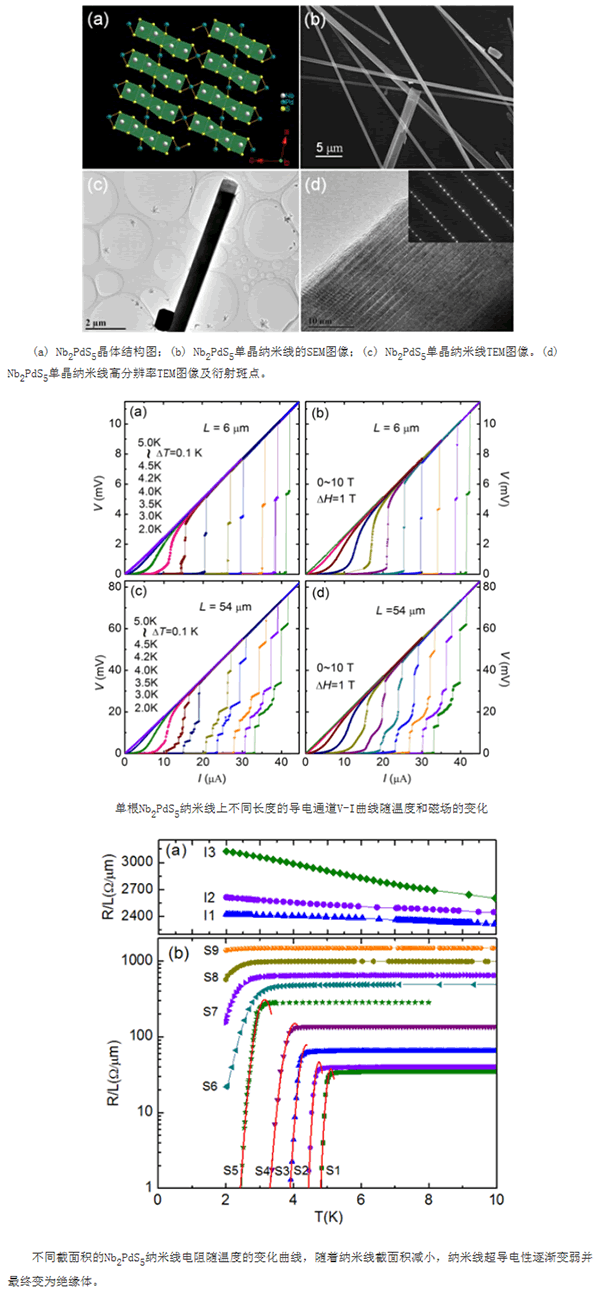
Researchers at the Strong Magnetic Field Science Center of the Chinese Academy of Sciences Hefei Tianliang Group and Zhang Changjin Group made new progress in superconductor-insulator transitions of single crystal superconducting nanowires. Related research results are published online in the American Chemical Society Nano Letters on.
The study of superconductor-insulator transition (SIT) of quasi-one-dimensional superconductors has attracted a lot of attention for a long time, but there are still disputes over the mechanism of controlling this transition of SIT. Because in the past research, most of the international use of thermal evaporation method to prepare nano-strip technology, basically single element or binary alloy superconductor materials, different morphology of nanowires (granular, polycrystalline, amorphous, etc. ) Shows a very different SIT transformation process.
Therefore, the use of single crystal superconducting nanowires to carry out intrinsic SIT research is helpful to clarify this problem, but it is very difficult to prepare single crystal superconducting nanowires with controllable cross-sectional area, and there has been no major international progress. Recently, Tian Tianming's experimental group found that its SIT is controlled by the cross-sectional area of ​​the nanowires, rather than the universally accepted normal state resistance, which is controlled by a universal quantum resistance.
Nb2PdS5 is a new type of quasi-one-dimensional superconductor recently discovered. Its crystals are stacked by quasi-one-dimensional metal chains. The superconducting transition temperature is 7.5 K. It is an ideal system for studying quasi-one-dimensional superconducting substructures (Yu et al. ., JACS 135, 12987 (2013) ). The study found that even coarser nanowires (~300nm) exhibit one-dimensional transport characteristics, such as length-related steps on the IV curve.
As the nanowires gradually decrease from 300 nm to 100 nm, the superconductivity of the nanowires gradually weakens and eventually becomes an insulator. Interestingly, the nanowire diameter at SIT is much larger than the theoretically expected superconducting coherence length (~5.4 nm), and the normal resistance before the transition is also less than the theoretically expected quantum resistance. Superconducting nanowires also exhibit similar SIT transitions when driven by a magnetic field. The superconducting transition process of these nanowires does not exhibit quantum phase shift (QPS) tunneling behavior but can be described by the thermally activated phase shift theory (TAPS).
These results indicate that in a quasi-one-dimensional system, the competition between the Coulomb interactions due to dimensional shrinkage and the Josephson interactions between metal chains plays a very important role in SIT. The related results provide important information for the deep understanding of the superconducting nanowire phase transition process and the development of superconducting sub-devices in practical applications.
The study was supported by the "973" project of the Ministry of Science and Technology and the National Natural Science Foundation of the Fund Committee.
PHROXI ABS pull-down spray head Kitchen Faucet made of high quality materials.This well-designed faucet features a ceramic disc cartridge.
Pull Down Kitchen Faucet,Commercial Kitchen Faucet,Brass Kitchen Faucet,Kitchen Faucet Brass
HESHAN CAIZUN SANITRAYWARE CO.,LTD , https://www.caizunsanitaryware.com